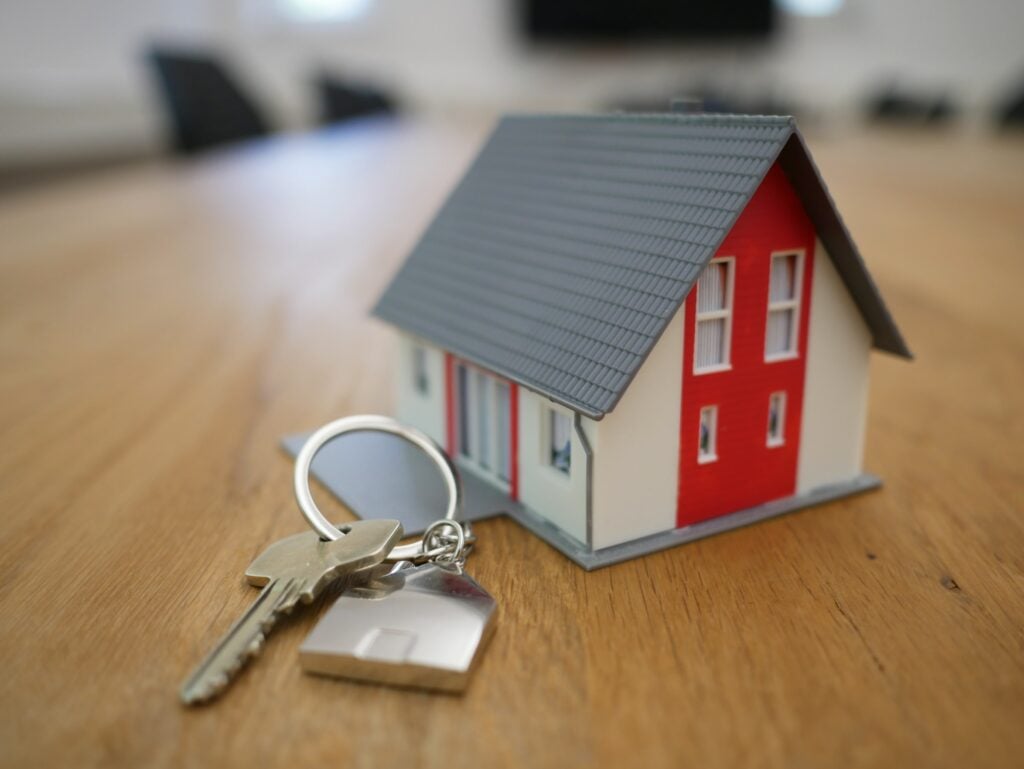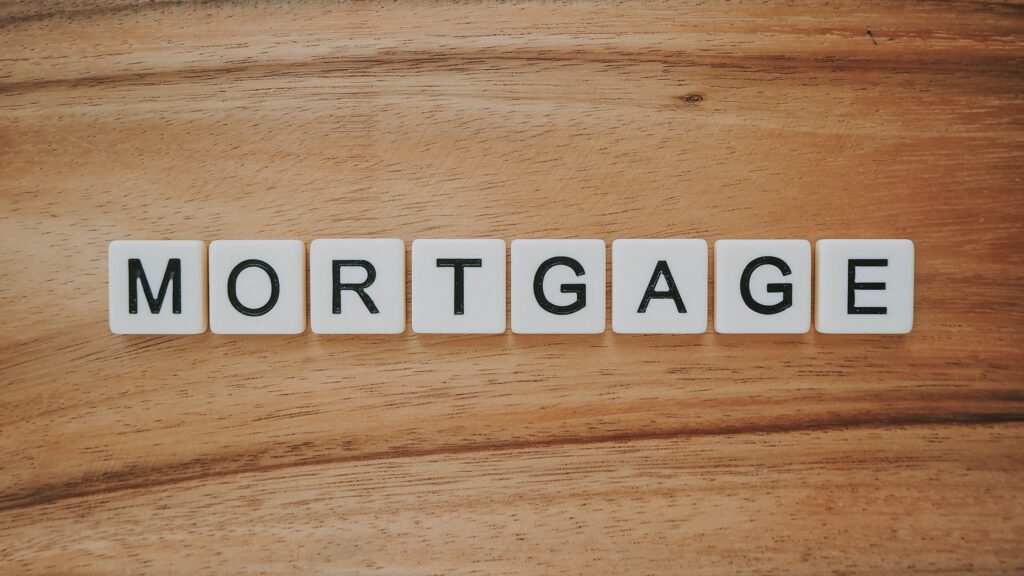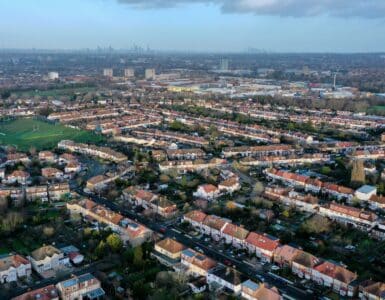Getting a mortgage is a big deal. Here we take a look at what a mortgage is, the different types of mortgages you can get in the UK, as well as a few things you need to do to make sure your mortgage application gets accepted.
What Is A Mortgage?
A mortgage is a loan that helps you buy a property.
When you want to buy a home, you normally start by putting down a cash deposit. This cash deposit is a percentage of the property’s value. You could pay anywhere between 5% and 20% of the properties value upfront.
You then need a mortgage (a loan) to pay for the remaining value of the property.
For example, you want to buy a house for 300K. You are putting down a 10% deposit of 30K. You’ll then need a loan to cover the remaining 90% of the property price, so you borrow 270K from a bank or building society.
You then pay back the amount you have borrowed, plus interest, over an agreed period of time. Some people prefer to pay their mortgage as quickly as possible, although the majority of people look to repay over 25 years.
Choosing the wrong mortgage could cost you thousands, so it’s important you understand the difference between each type of mortgage and properly calculate how much you can afford.
Different Types Of Mortgages In The UK
The amount of money you could end up paying back on your mortgage depends on how much your property cost, and the deal that you get.
Interest rates are just one part of the deal that you need to take into consideration.
They can hugely impact how much you pay each month, and over the total mortgage period.
For example, 4% interest on a 270K mortgage is £1,425 a month. 5% would cost you £1,578 per month. Over the course of your whole mortgage, the 5% interest deal would end up costing you considerably more.
The two main types of mortgages in the UK are therefore fixed-rate mortgages or variable-rate mortgages.
1. Fixed Rate Mortgage
With a fixed rate mortgage, you agree to pay the same interest rate for the entire mortgage period, regardless of what is happening with other interest rate changes.
These are popular with people who like to know exactly how much they’re paying each month. Payments on this type of mortgage won’t increase, which makes budgeting for your mortgage a lot easier.
The mortgage period on fixed rates can be anywhere from two years to 15 years. During this time the lender offers a competitive interest rate.
Once your fixed term has ended, you’ll be moved onto your lenders standard variable rate. If you’re not happy with the new variable rate you can remortgage by changing to a lender with more attractive rates.

2. Variable Rate Mortgage
If you have a variable rate mortgage, this means that your mortgage rate is likely to change throughout your term. Rates can go up, and down. They usually go up if the economy is experiencing growth, and down if the economy is struggling (to encourage you to spend, instead of save)
Within Variable rate mortgages you then have Tracker Mortgages, Standard Variable Rate Mortgages, Discounted Mortgages and Capped Mortgages.
Tracker Mortgages
With a Tracker Mortgage, the interest rate ‘tracks’ whatever the Bank of England base rate (or, borrowing rate) is. Your payments will therefore go up and down in line with the market.
The current Bank of England base rate is 0.1% – your mortgage will be this, plus a charge on top of this which has been pre-agreed. For example, if your tracker mortgage is the base rate +2%, you will pay 2.1%. If the Bank of England base rate increases from 0.1% to 1%, you will then pay 3%.
Some people prefer tracker mortgages because they know the rate is due to the economy, and not commercial reasons decided by the lender.
However, tracker mortgages can be risky because if the base rate dramatically increases, your payments will also increase. This can make budgeting for your mortgage a little tricky, as the amount you need to pay can change regularly.
Standard Variable Rate Mortgages
A standard Variable Rate Mortgage sees the rate set by the lender, regardless of what the Bank of England rate is. Lenders can change the rate whenever they want, whether for economic reasons, or for commercial reasons. This means your payments could increase at any time, making it much harder to manage your monthly outgoings.
Standard Variable Rates are most commonly the rate that people end up paying after they have finished an incentive period, like a two year fixed rate or tracker mortgage. They aren’t usually available to new customers.
If you’re on a standard variable rate then it might be worth shopping around because rates are usually not very competitive. You normally pay more on a standard variable rate mortgage than you would on another type of mortgage, like a fixed rate. So remortgaging to a new deal could save you money.

Discount Mortgages
If you have a Discount Mortgage, you pay the lenders Standard Variable Rate but you get a fixed discount for a set amount of time. The amount of time is usually quite short, perhaps a couple of years, although longer terms can occasionally be found.
This type of mortgage is classed as a variable rate mortgage because the lenders SVR can change. Unlike tracker mortgages where you can make an educated guess of what will happen to the base rate, discount mortgages are harder to predict because it’s down to the lender.
Discount Mortgages can sometimes be a little misleading. If a lender’s discount mortgage is 3% and their SVR is 5%, you’re getting a 2% discount. If they then increase the SVR to 6% your mortgage rate increases to 4%.
When comparing discount mortgages it’s therefore important to not get drawn in by the discount percentage, but by the underlying rate you pay.
Capped Rate Mortgages
Capped Rate Mortgages are a form of a variable rate mortgage that comes with a “ceiling rate” or “cap” which ensures that your payments do not go above a certain level.
This type of mortgage therefore gives you a little more security, as you know your payments will never go above an amount you can comfortably afford. Because they’re a variable rate, you might also get the added benefit of lower payments when rates go down.
It is because of this flexibility, that Capped Rate Mortgages can be quite difficult to find.
3. Offset Mortgages
Lastly, there’s another type of mortgage called an Offset Mortgage. This type of mortgage keeps your mortgage debt and any money you have in savings in separate pots with the same bank or building society. The money you have in your savings pot is then used to “offset” the amount of interest you pay on your mortgage.
For example, if you have a £270K mortgage and savings of £20K, you only pay interest on the difference of £250K.
If you have a nice amount of savings then this type of mortgage is a no brainer. It can help reduce the cost of your monthly payments. It can help you pay off your mortgage quicker. Which ultimately means you’ll save more money in the long run.
Some people may be put off by Offset Mortgages because they think it restricts their access to their savings. In reality, you can still access your savings whenever you need – you just won’t benefit from the reduced interest.
If you have some extra cash, you can either add to your savings, or you can overpay on your mortgage. Both options will help you save on interest paid, but paying directly to your mortgage means you won’t be able to access the cash at a later date.
Will You Be Accepted For A Mortgage?
Now you know about the different types of mortgages, you can consider whether you’re likely to be accepted for a mortgage.
Lenders have many different requirements to take into account when accepting you for a mortgage. They’ll look at the value of the property, your deposit and your age. They’ll also look at the length of the mortgage term, how much money you earn and your credit record.
Getting your credit record in good shape is therefore important when it comes to mortgage applications. Find out how you can improve your credit score here.
Saving as much money as possible for the deposit can also help. Mortgage providers tend to reserve their lowest interest rates for the people with the biggest deposits, so it can be worthwhile saving up for a bigger deposit. However it’s worth noting that the deposit is not the only upfront cost you’ll be expected to pay when buying a house – you can read more about this here.
Getting yourself on the electoral role and being prepared with all the relevant documents can also increase your chances of your mortgage being accepted.
Summary
Here we’ve looked at all the different types of mortgages. It’s important to understand the differences between each type and thoroughly assess which mortgage is right for you.
Head to the Save Money tab on Emma and compare a wide range of different mortgages. All you need to do is answer a few questions, like if you’re a first-time buyer or you’re looking to remortgage. How much you want to borrow. And what repayment term you’d like, and we’ll help you compare hundreds of different rates.
Emma is a money management app that connects all your bank accounts to track your monthly spending and subscriptions. We’ll help you visualise and take control of your finances. Make sure you aren’t overspending and show you practical steps to start budgeting effectively. Download Emma today.







[…] Understanding The Different Types Of Mortgages In The UK […]
[…] Mortgages […]
[…] Understanding The Different Types Of Mortgages In The UK […]
[…] type of mortgage has a variable interest rate. This means that the interest rate you’re paying could increase, or […]
[…] you have an adjustable-rate mortgage, then the interest rate will change after the initial set period of two, three, five years, etc. […]
[…] The reason behind this method is that you generally spend less money as you get older. You won’t be commuting to work, you probably won’t be paying for any childcare costs, and you might have paid off your mortgage. […]